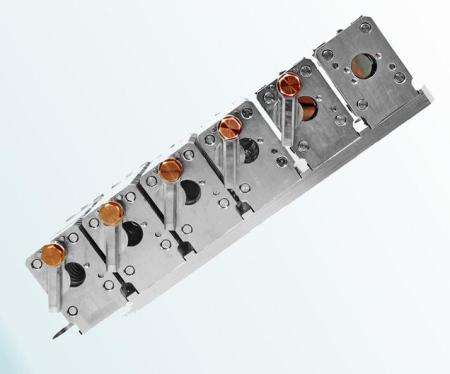Forschungszentrum Jülich led an international team of researchers to achieve a new mirror system for the ITER fusion reactor. Known as ‘mirror station’, this system consists of shutters with automated open and close capabilities.
 Front side of the test set-up of Jülich’s “mirror station” with the passive magnetic protective shutters facing the fusion plasma. Source: Forschungszentrum Jülich
Front side of the test set-up of Jülich’s “mirror station” with the passive magnetic protective shutters facing the fusion plasma. Source: Forschungszentrum Jülich
The optical components will therefore be free from particle flow contamination within the vacuum vessel. In the USA, this module is being validated for application by researchers since mid-March.
Upgrades in nuclear fusion rely on optical diagnostic methods. The properties of plasma such as its composition and the concentration of various elements and isotopes can be determined by the light generated in plasma. The international researchers therefore require a solution that can enable similar optical analyses at ITER and other power plants. The intense neutron radiation allows indirect observation of light with the help of mirror systems placed at the edge of plasma. In this region, the mirrors are prone to contamination due to the removal of beryllium and tungsten particles from the wall materials when subjected to hot plasma.
ITER’s new mirror system includes monocrystalline molybdenum- based fast shutters, where the mirrors are kept open during the plasma pulse’s main phase. During the ignition of plasma, there is a higher risk of contamination. The sensitive optical components are safely protected by the shutters, during this phase. Jülich’s mirror station totally depends on passive control as the very strong magnetic fields within the vacuum vessel interfere with electrical circuits, requiring an additional magnetic field component. However, it can be obtained following the ignition of plasma in ITER or any other similar tokamak reactor. It is activated on the mirror station’s magnetic ferrite core, passively uncovering the protective shutters.